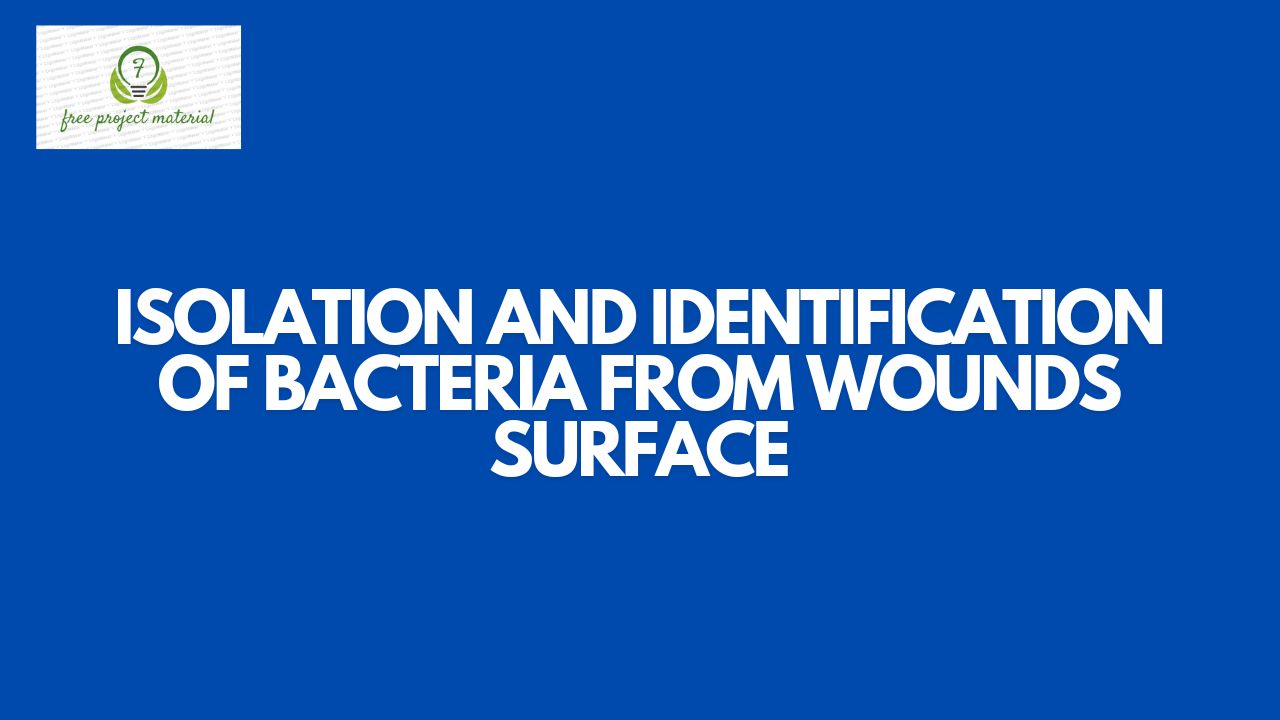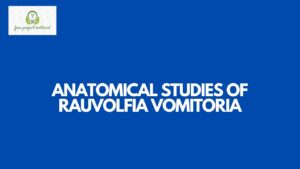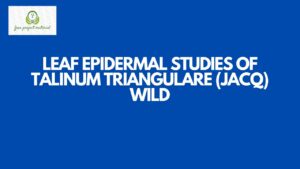ABSTRACT
The isolation and identification of bacteria from wound surface were study using the standard microbiological method. The wound samples were collected from five different patients and were brought to the microbiology laboratory for analysis five in numbers, the highest bacterial colonies count was 70 while the lowest bacterial colonies count was 10. This study aimed to identify the bacteria pathogens present in infected wounds and to classify them according to their cultural characteristics. Five wounds swab samples were collected from 5 patients and was analyzed for the identification of micro-organisms. A total five species were isolated from five infected wounds, the most commonest bacterial species detected was staphylococcus aureus (46%) followed by pseudomonas species (30%) Escherichia coli (14%) and staphylococcus sp. (21.7%). Gram reaction test were used to identified between the gram-negative and gram-positive. In cultural and biochemical characteristic test bacterial isolates shows both positive and negative result, different color, formation, shape and structures. The reassessment of the etiology and antimicrobial susceptibility pattern of wound infection is necessary for current management of this infection.
TABLE OF CONTENTS
Cover page- – – – – – – – – – i
Certification- – – – – – – – – ii
Dedication- – – – – – – – – – iii
Acknowledgement- – – – – – – – iv
Abstract- – – – – – – – – – v
Table of contents- – – – – – – – – vi-xi
CHAPTER ONE
1.0 INTRODUCTION- – – – – – – 1-3
1.1 Aims and objectives- – – – – – – 3-4
1.2 Scope and Limitation- – – – – – – 4
CHAPTER TWO
2.0 LITERATURE REVIEW- – – – – – 5
2.1 Bacteria- – – – – – – – – 5-6
2.1.1 Structure- – – – – – – – – 7-14
2.1.2 Classification and Identification- – – – – 14-20
2.2 Wound types- – – – – – – – 20
2.2.1 Acute wounds- – – – – – – – 20-21
2.2.2 Chronic wounds- – – – – – – – 21-22
2.3 Wound Microbiology- – – – – – – 22-25
2.4 Wound infection and types- – – – – – 25-26
2.4.1 Surgical wound infections- – – – – – 26-28
2.4.2 Bite wound infections- – – – – – – 28-29
2.4.3 Burn wound infections- – – – – – – 29-31
2.4.4 Diabetic for ulcer infection- – – – – – 31-32
2.4.5 Acute soft tissue infections- – – – – – 32-33
2.5 Significance of micro-organisms in wounds- – – – 33-34
2.6 Control of microbiological population in wounds- – – 35-36
2.6.1 Anti-microbial method of treatment- – – – – 37-41
2.6.2 Non-antimicrobial method of treatment- – – – 42-45
2.7 Infection control- – – – – – – – 46
CHAPTER THREE
3.0 Material and Method- – – – – – – 47
3.1 Material/ Reagent used- – – – – – – 47
3.2 Wound Sample Collection and Preparation – – – – 48
3.2.1 Study population- – – – – – – – 48
3.2.1 Sample Collection/Processing- – – – – – 48
3.3 Microbiological analysis- – – – – – – 49
3.3.1 Cultivation of micro organisms- – – – – 49
3.3.2 Enumeration of Bacterial Isolates- – – – – 49
3.3.3 Purification of Bacterial Isolates- – – – – 49-50
3.3.4 Characterization and Identification of Bacteria- – – 50
CHAPTER FOUR
4.0 RESULT AND DISCUSSION- – – – – – 51
4.1 Result- – – – – – – – – 51-54
4.2 Discussion- – – – – – – – – 55-59
CHAPTER FIVE
5.0 CONCLUSION AND RECOMMENDATION- – – 60
5.1 Conclusion- – – – – – – – – 60
5.2 Recommendation- – – – – – – – 61
References
CHAPTER ONE
1.0 INTRODUCTION
A wound is any physical injury involving a break in the skin (Collier, 2002). The exposed subcutaneous tissues provides a favorable substratum for a wide variety of microorganisms to contaminate and colonize, and if the involved tissue is devitalized and the host immune response is compromised, the conditions become optimal for microbial growth (Bowler et al., 2001). This is because the host immune response plays a critical role in determining whether wound infection will arise (Patel, 2010). Wound infection refers to the decomposition and multiplication of bacteria in tissue with an associated host reaction (Ayton, 1985). This may be characterized by the classic sign of redness, pain, swelling and fever (Calvin, 1998).
The progression of a wound to an infected state is likely to involve a multitude of microbial or host factor including the type, site and depth of wound, the extent of non-viable exogenous contamination, the general health and immune status of the host, the microbial load, and the combined virulence expressed by the types of micro-organisms involved (Bowler et al., 2001).
Although the majority of wounds are polymicrobial involving both aerobes and anaerobes, aerobic pathogens such as staphylococcus aureus, pseudomonas aeroginosa, and beta haemotytic streptococci have been most frequently reported as the cause of delay wound healing (Brook, 1996; Madsen et al., 1996); Danielson et al., 1998; Shittu et al., 2002; Patel, 2010). However (Trengove et al., 1996) reported that no single micro-organism or group of organisms was more detrimental to wound healing than any other.
The following organisms are commonly associated with wound infection Streptococcus pyogenes, Staphylococcus aureus, Pseudomonas aeruginosa, Escherichia coli, Klebsiella species, Proteus species, Clostridium species and Bacteroides fragilis, Candida species and Aspergillus species (Collier, 2002; Bowler et al., 2001; Patel, 2010).
Wound infections cause great distress in term of associated mortality and morbidity, increased length of hospital stay, delayed wound healing, profound discomfort and significant increase in health cost (Green et al., 1977). However, a reassessment of the etiology and antimicrobial susceptibility pattern of wound infection is necessary for current management of this infection. Generally, after the clinical diagnosis of infection is made, culture is recommended to identify the causative organism and guide antibiotic therapy.
1.1 Aim and Objectives
The aim was to isolate and identify the bacterial pathogens present in wound surface.
1.2 Objectives of this project are;
- To determine the bacterial present in wound surface.
- Compare the result of this isolation with the work of other researchers.
- To identify and classify bacteria isolate based on the result obtained.
- Make recommendation based on the result obtained from the analysis.
1.3 Scope and Limitation
This project is limited to isolation and identification of bacteria from wound surface only due to time, inadequate facilities and financial constraint.



